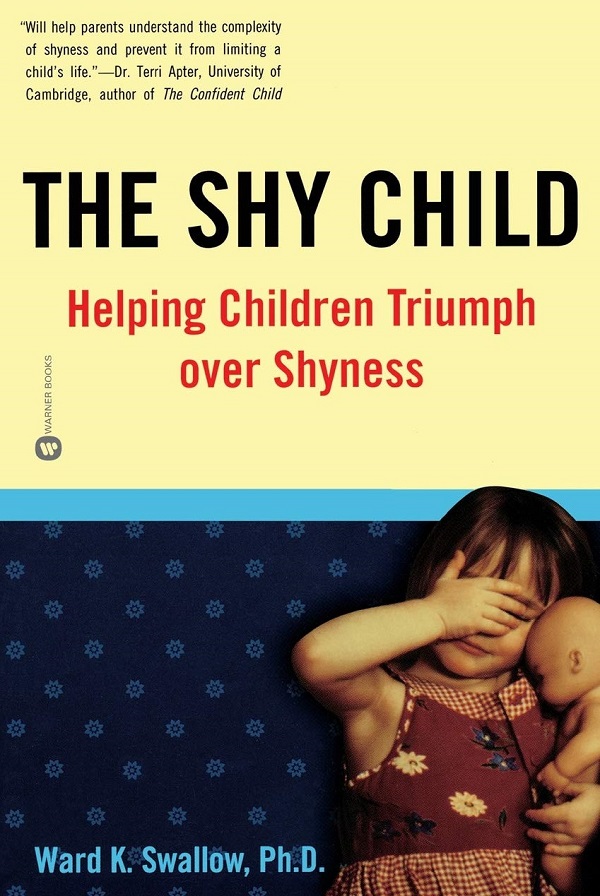One had always thought of shyness as a behavioural anomaly. It may not be so, after all. According to Dr Ward K Swallow, PhD, a noted paediatric psychiatrist, shyness is not a disorder. It is also not a disability, or the cause for parental despair and societal intolerance. His raison d’etre? Shyness is a personality style.
Dr Swallow’s is a definitive blueprint. Your child, he notes, is not doomed to a life on the fringes of society. They, he adds, can learn to interpret realistically what others think of them — and, make friends and move comfortably in a social circle. Elaborating further, Dr Swallow summarises his doctrine: “[They] can do all this, not in spite of their shyness, but within the context of their shy personality.”
In his beacon of a book, The Shy Child, Dr Swallow, is emphatic that your attitude towards shyness affects your child’s vision of oneself. He says: “If you think that shy children are weak characters, your child will perceive oneself as weak and undeserving… If, on the other hand, you see shyness as just one part of your child’s multi-faceted personality, then they will accept it and, most importantly, remain open to your ideas about how to cope.”
As a matter of fact, shyness is nothing to be afraid of. Why? As Dr Swallow underlines: “By understanding the nature of shyness and society’s reaction to it, you can begin the task of supporting your shy child as they learn skills that give them that they are capable of taking charge of their actions and reactions.” He outlines his game plan: “To begin the process, it’s time to take a closer look at your child.”
Shyness, after all, has a good side to it. Your child may probably be imaginative, perceptive, and thoughtful, even if shyness could impede their development. Dr Swallow’s compendium is a step in the right, or write, direction. It’s, perhaps, the first book to focus on the myriad underpinnings of shyness and provide us with pragmatic, step-by-step solutions. This is not all. It takes a comprehensive peek into the problem per se not only by way of anecdotal evidence and case samples, but also by way of studies in shyness — including the pioneering work of Dr Jerome Kagan, PhD, the renowned development psychologist, at Harvard University.
Dr Kagan’s study evaluated hundreds of children and determined that some shyness is ‘hardwired:’ of why some are born with inhibited tendencies that make them freeze in unfamiliar situations, keep them quiet in the presence of strangers, avoid new stimulus, and/or withdraw into themselves when stressed. Dr Kagan’s detailed research and analysis, based on years of study, concludes that twenty per cent of children are born with a shy, or inhibited temperament. Dr Kagan also believes that the brains of such children are more easily aroused to anticipate fear and danger when other children do not sense any trouble. Not only that. At the other end of the spectrum, Dr Kagan found forty per cent of children to be born with relaxed, easy-going personality traits that do not react with apprehension, or anxiety, to new situations. So, there it is. If the two groups are understood to be ‘poles’ of introversion and extroversion, the remaining forty per cent of children, Kagan contends, fall somewhere in-between.
The Shy Child also explains that the role of experience is as important as upbringing. They have a critical influence. It says that shyness is determined by both nature and nurture. As Dr Christine Hohmann, PhD, a neuroscientist, put is so neatly: “The genes are the bricks and mortar to build a brain. The environment is the architect.”
Dr Swallow, therefore, maintains that it is best to revere your child’s style, even if scientists take their own time to pinpoint the genes that determine shy tendencies. He argues that focusing on such a quest is impractical, because children come into the world with a partially written script. This only explains why environment, parenting, and opportunity, will always have a bearing on the kind of people they become.
His prescription: “The path to success in parenting children of any temperament is to strive to understand the kind of temperament your child was born with by noticing what kind of activity makes them happy: how they like to play; what soothes… what disturbs them.” His bottom line: “Knowing all this is one thing, but respecting and honouring your child’s type of interacting with the world is the key to making sure their temperament does not trip them up later in life.”
The Shy Child
Dr Ward K Swallow, PhD
Grand Central Publishing
pp: 288
Price: ₹1,530.00

